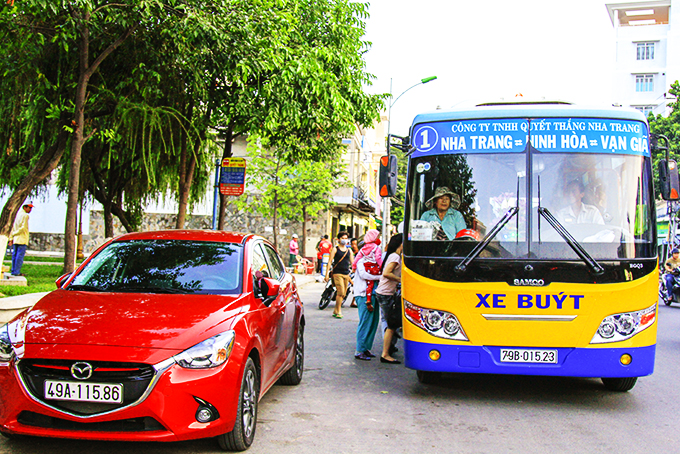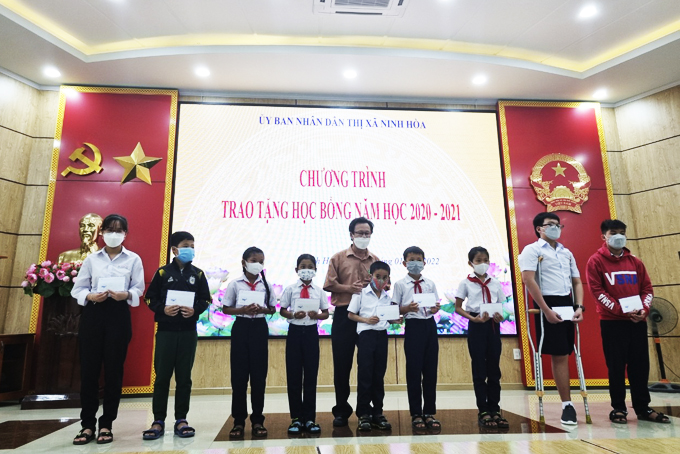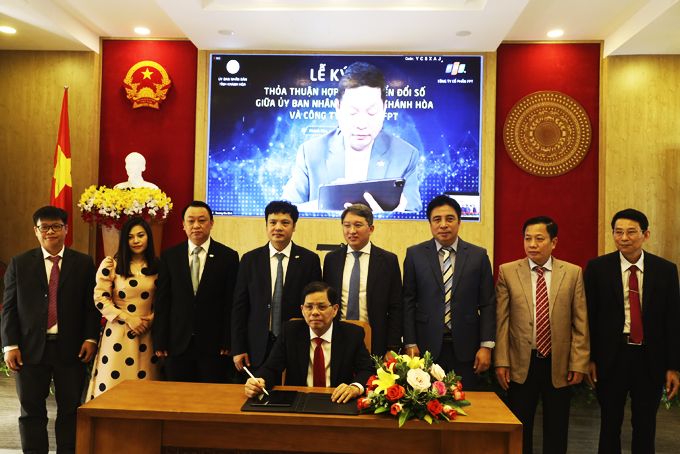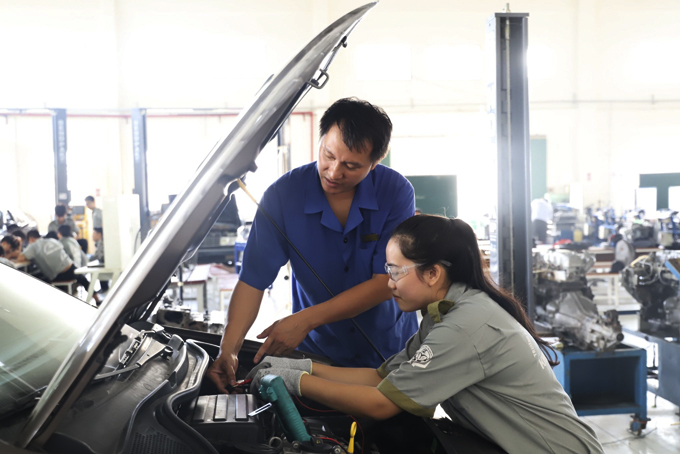
Khanh Hoa Department of Transportation has reported a project on public bus transport development in the province, period 2020 – 2030 to the provincial leaders...
Khanh Hoa Department of Transportation has reported a project on public bus transport development in the province, period 2020 – 2030 to the provincial leaders.
Necessity of the project
In recent years, the number of personal motor vehicles has increased due to the population growth and rise in tourist arrivals, resulting in traffic jams in Nha Trang City and some areas in the province during peak hours. According to statistics, the population in the province has reached more than 1.2 million, the average population growth rate in the past 10 years was about 0.7%/year. Prior to the pandemic in 2019, the total number of tourists to the province was more than 7 million, up by 13.3% compared to 2018.

|
According to the Department of Transportation, in 2020, the province saw more than 1.2 million motor vehicles, including 58,348 cars, more than 1.1 million motorbikes and electric ones. In the last 5 years, the number of personal vehicles has increased by 10-12% per year on average. Meanwhile, public transport infrastructures and facilities are still limited, putting pressure on main roads, resulting to risks of congestions especially in Nha Trang City center during rush hours.
Cao Tan Loi, Deputy Director of the Department of Transportation said that the province always looks to developing various types of public transport, especially passenger bus transport which helps reduce the load of personal vehicles, minimize traffic congestion and accidents. This is considered as a civilized and sustainable development trend in the world and cities in Vietnam.
The public bus transport network in Khanh Hoa has 16 routes, including 8 subsidized bus service routes which are about to be put into operation and 8 non-subsidized inter-district bus service routes connecting Nha Trang City with other localities of Ninh Hoa, Van Ninh and Cam Ranh. The bus service has helped facilitate travel, reduce traffic congestions and minimize road crash.
With the target to promote sustainable traffic development, encourage the use of public transport service and diversify means of transport, the project on public bus transport in the province in the period 2020-2023 is essential to meet travel demand.
Several bus routes suggested
Accordingly, in the period 2020-2025, the bus network expands to 22 routes, including 9 subsidized, 8 community-funded, 4 inter-provincial routes and 1 tour route. In the period 2025-2030, there are 2 public bus rapid transits (BRT), 15 subsidized, 8 community-funded inter-provincial routes and 1 tour route. The bus frequency is every 20-30 minutes in the period 2020-2025 and every 10-20 minutes on average, every 10 minutes for BRT in the period 2025 – 2030.
The parking area for buses is expected to be more than 10,900m2 by 2025, more than 14,700m2 by 2030. Proposed transfer locations include Ma Vong parking lot, the intersection between Ring Road 2 and Road 23-10, Binh Tan bridge area and Nha Trang City Northern coach station. The funding for the effective operation of the public bus service is expected to be more than VND160 billion by 2030.
In addition, the consulting unit also proposed information technology solutions used for public passenger transport such as traffic maps, transport network maps, languages, navigation surveillance cameras on road and on buses; journey monitoring equipment, etc for transport service quality monitoring.
Nguyen Tan Tuan, Deputy Secretary of the Provincial Party Committee, Chairman of the Provincial People's Committee requested the Department of Transportation and the consulting unit to give some more details about the necessity of the project on the basis of the assessment of transport activities from 2010 to the present; assess the current status of the passenger transport system, thereby setting targets and forecasts up to 2030 regarding impacts of vehicles and population; review the legal basis for the project; clarify project objectives, development plans, public passenger transport quality and quantity, management, payment technology, fare plans, etc.
M.H
Translated by N.T










